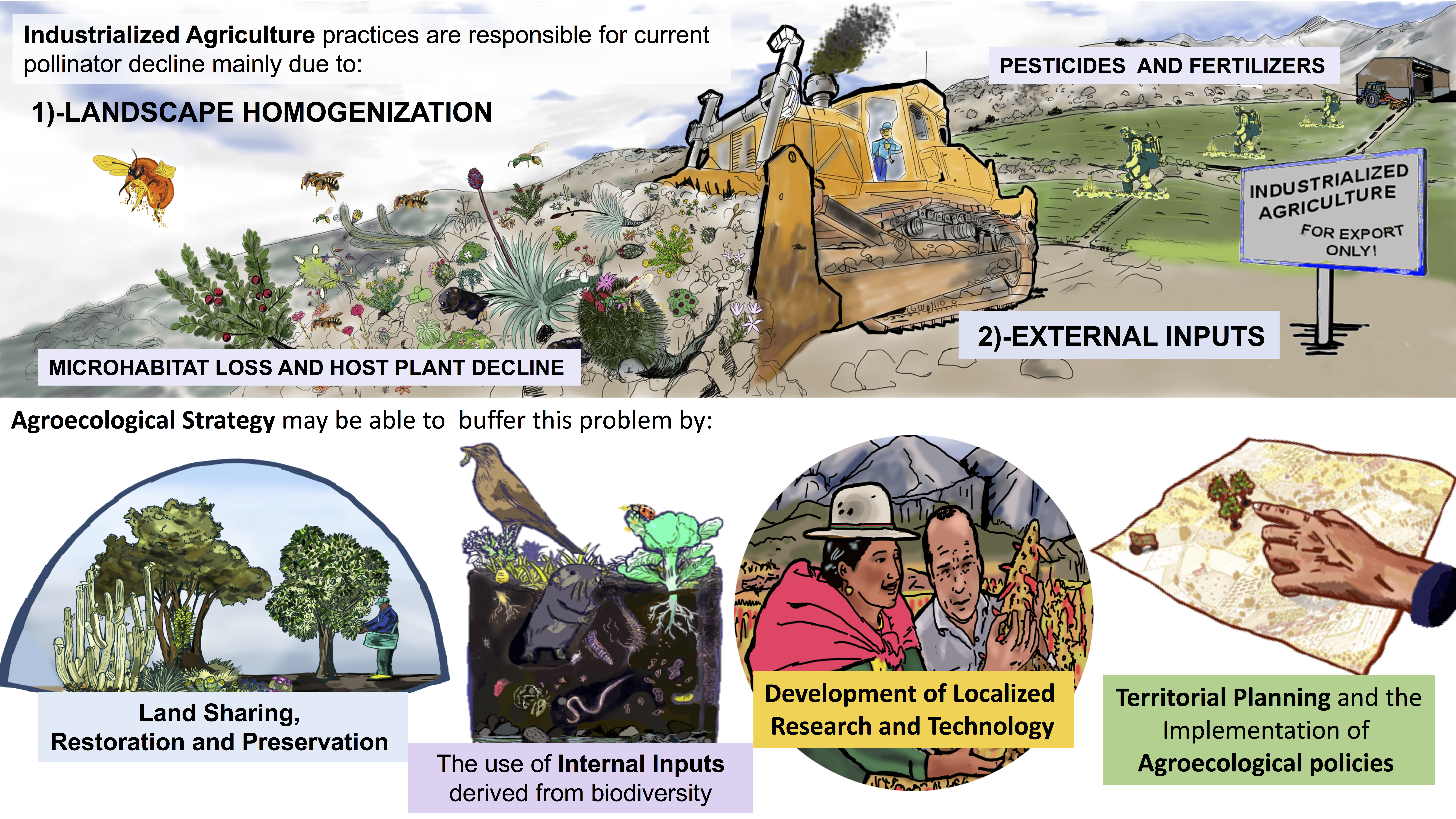Industrial agriculture (IA) is the predominant model of food production since the Green Revolution in the 1950s. IA has been recognized among the main drivers of biodiversity loss, climate change and native pollinator decline. This is controversial, given that native agricultural pollinators are an important resource biota already contributing to crop yield, especially in areas defined as "world biodiversity hotspots” (WBH). These areas often overlap with agricultural zones hosting a significant proportion of cultivated land, mainly through intensive agricultural practices. Pollinator biodiversity and pollination services in these places are currently under threat due to the negative consequences of IA. The dual role of insects as key players allowing the maintenance of the natural ecosystem, as well as main crop pollinators, is particularly exacerbated and urgently requires conservation actions in WBH and food-producing zones. Here we summarize the known negative effects of IA on pollinator biodiversity and illustrate these problems by considering the case of Chile. Food exports represent a considerable part of the economy in this OECD “developing country” in the “Global South”, and a large part of its surface has been highlighted as a unique WBH. This area is currently being replaced by IA businesses at a fast pace, threatening local biodiversity. We present agroecological strategies for sustainable food production and pollinator conservation in food-producing WBHs like Chile. These alternatives recognize native pollinators as internal inputs that cannot be replaced by IA technological packages or external inputs and support the development of agroecological and biodiversity restoration practices to protect their existing biodiversity. We suggest a strategy that integrates four fundamental pillars for producing food in a sustainable way, recognizing biodiversity and local cultural heritage: 1) Share the land, restore and protect; 2) Ecological intensification; 3) Localized knowledge, research and technological development; and 4) Territorial planning and implementation of socio-agroecological policies. We suggest that this approach does not need greater modification of native pollination services that sustain the world with food and basic subsistence goods, but a paradigm change where the interdependency of nature and human wellbeing are recognized for ensuring the present and future of the world’s food security and sovereignty as well as considering the reduction of consumerism and food waste.

